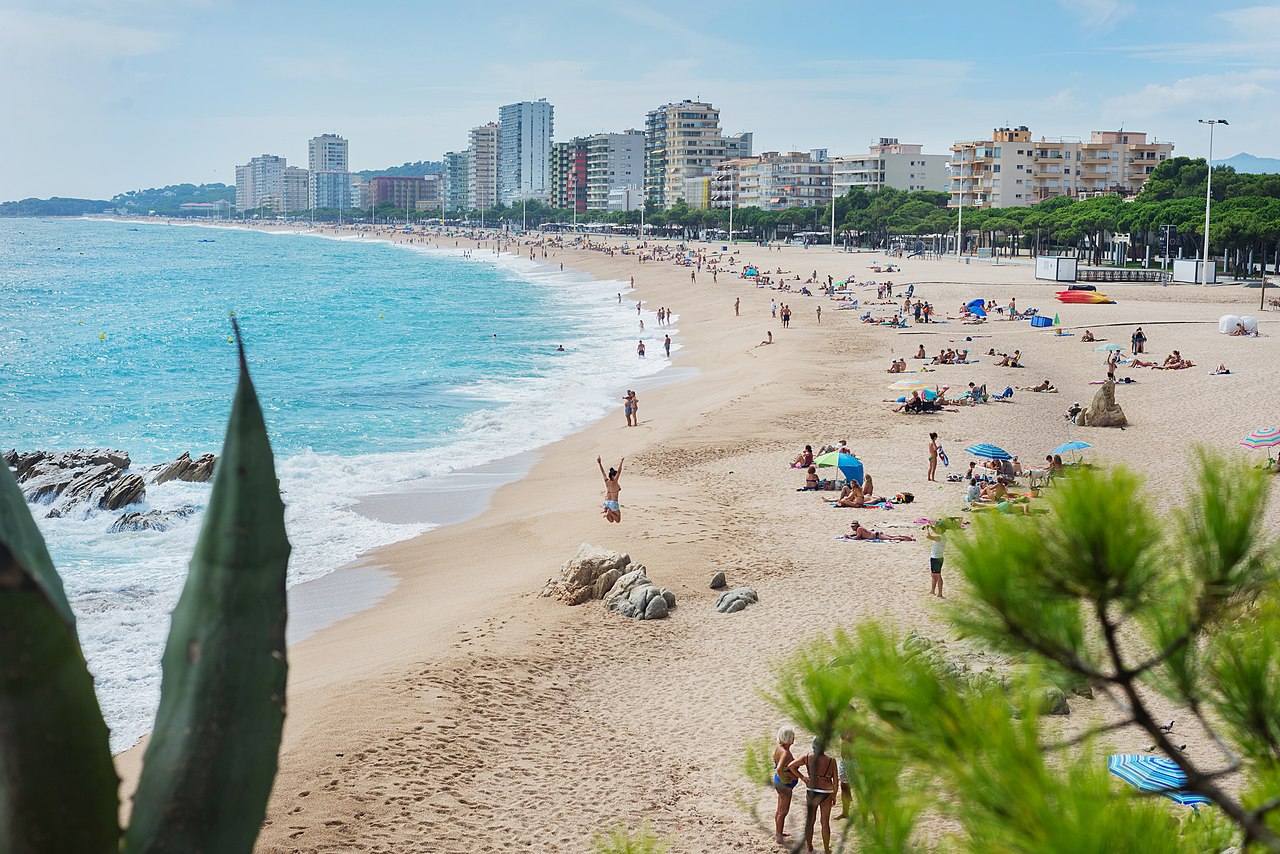
Discuss Playa de Aro and what to see in this Catalan municipality it means doing it from the magnificent coves and beaches of the Costa Brava or from hiking trails. But also from a place with a long history that dates back to the Neolithic, as evidenced by the Menhirs of Vallbanera.
Playa de Aro is located between Calonge y San Feliu de Guixols. Towards the interior it extends by the aro valley, a plain bathed by the river Ridauras and delimited by the Sierra de Cadiretes and the Gavarres massif. As you can see, its geographical location is privileged. But, in addition, it is made up of two other localities: Castle of Aro y S'Agaro. If you want to discover the answer to the question “Playa de Aro: what to see?”, we encourage you to continue reading.
Beaches and coves
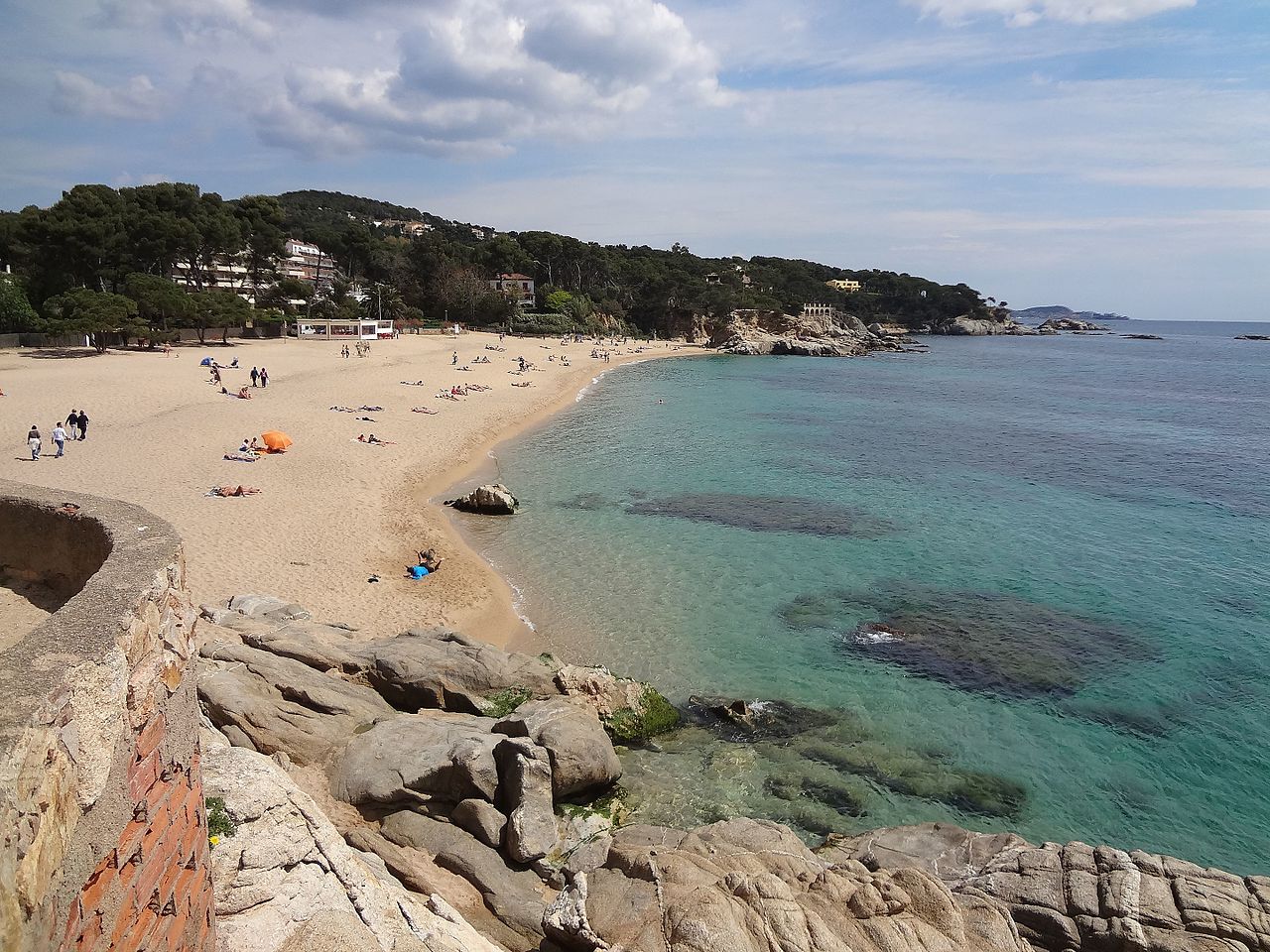
Cala Rovira, in Playa d'Aro
As it could not be otherwise if we are talking about the Costa Brava, Playa de Aro offers you wonderful beaches and dreamlike coves. The most popular is in the urban center of the town. is the big beach, which is almost two kilometers long and has the unique Cavall Bernat rock, which has nothing to do with the homonymous Montserrat.
And, along with the previous one, you have in Playa de Aro coves as beautiful as those of Canyers, del Pi, Belladona, Sa Cova or Pedrosa. Likewise, in the town of Sa Agaró you have the Sant Pol beach and, very close, the Racó. All of them, with fine sand and crystal clear waters, allow you to enjoy sports such as scuba diving. kayaking or fishing.
Hiking trails
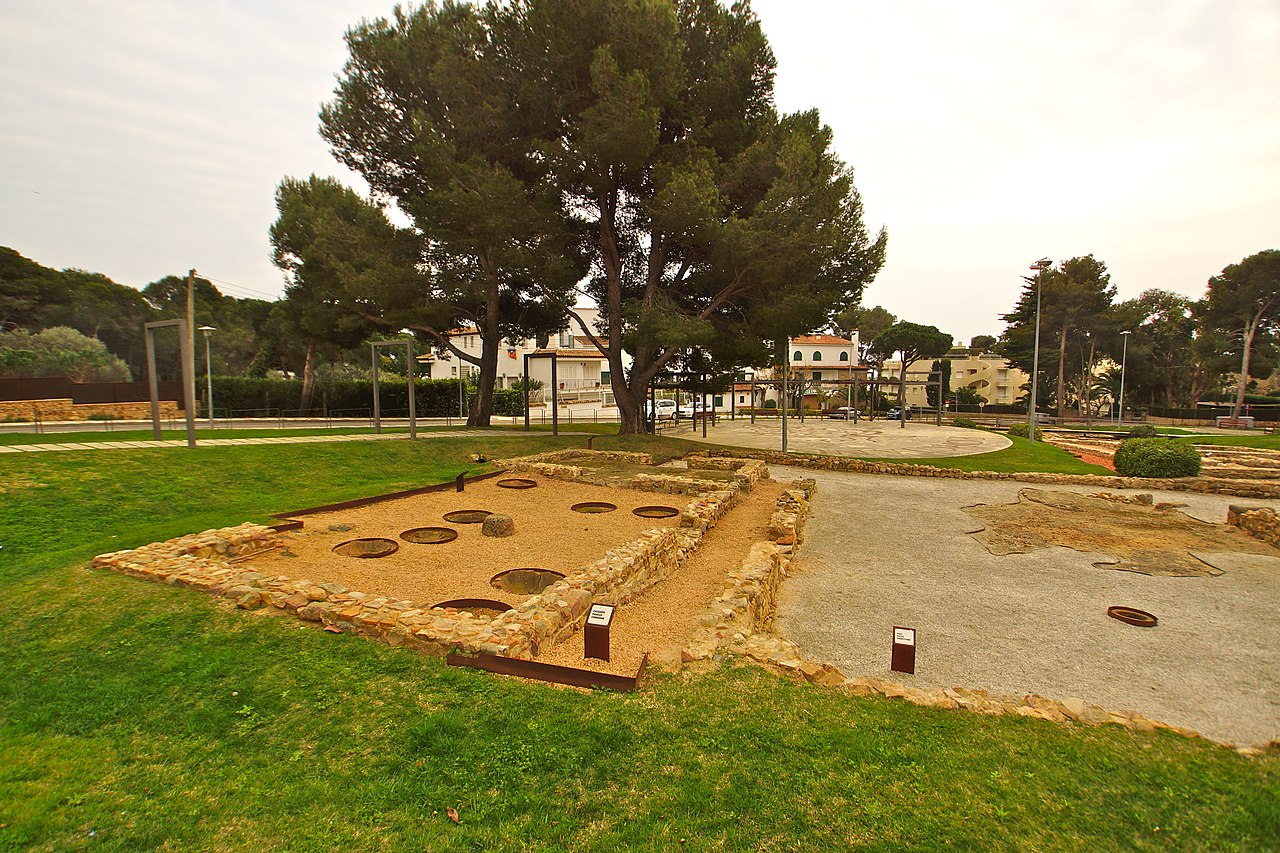
Pla de Palol Roman Villa
Many of these beaches are also found at the foot of the Parapet walk, a path that connects Playa de Aro with the nearby Calonge. It is one of the easiest routes you can do in the Catalan municipality and offers you a spectacular panoramic view of the Costa Brava. We recommend that you look at parts such as the Rodones de Dintre and de Fora, which appear and hide depending on the tide. Or also Les Roques Plans, with its peculiar rounded appearance due to marine erosion.
Along with the previous one, you have in Playa de Aro many other hiking trails that even take advantage of old railway lines. Among them, we will also mention the one that joins this town with San Feliu de Guixols. Part of the remains of the Roman Villa of Pla de Palol, dated to the XNUMXst century BC. Through different coves and beaches and after passing through S'Agaró, it allows you to also get to know San Feliú, whose bay you can appreciate very well from the hermitage of Sant Elm, a chapel built in the XNUMXth century.
What to see in Playa de Aro
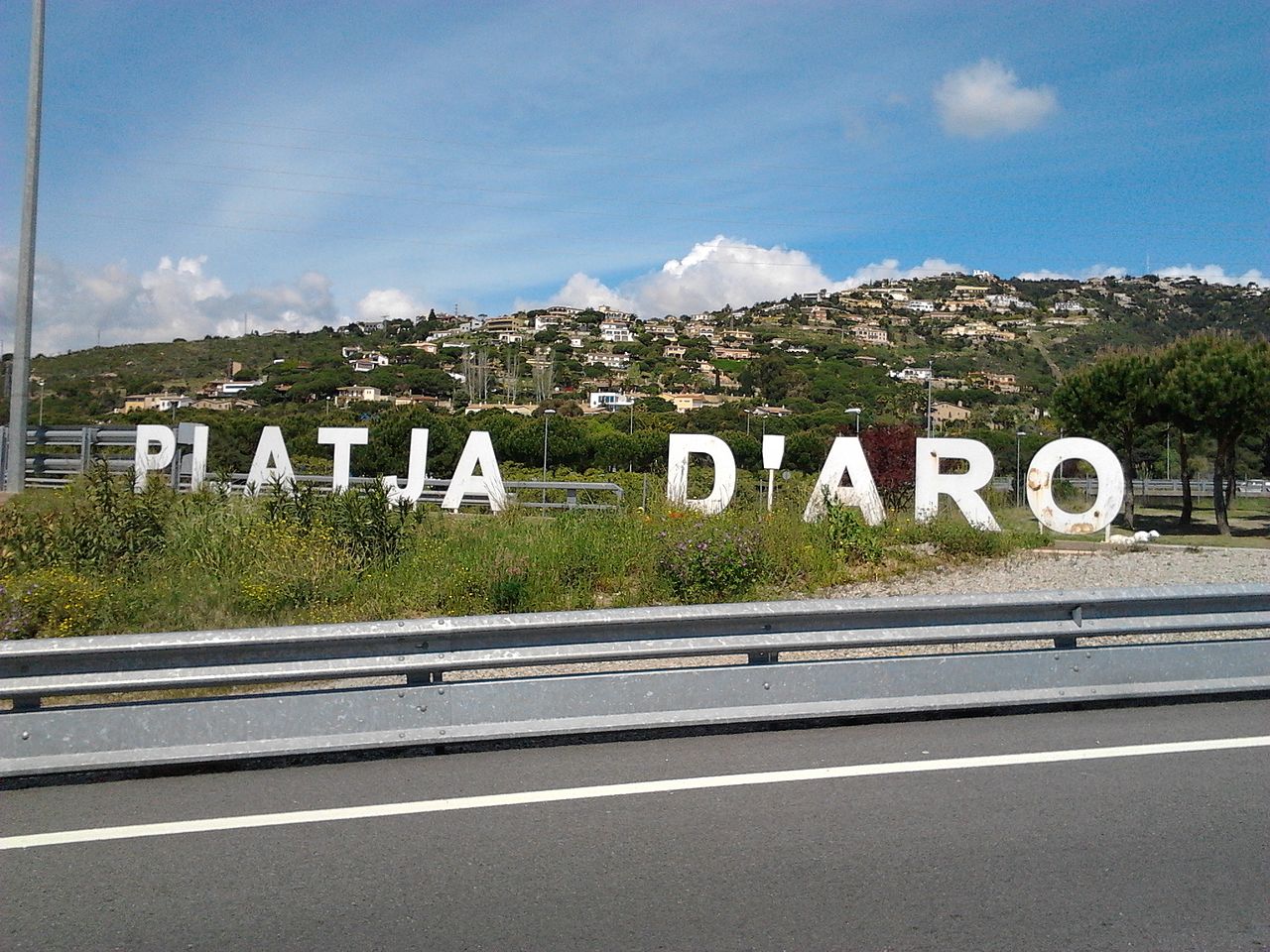
Road access to Playa de Aro
Once we have told you about the nature of this Girona municipality, we will show you what you can see in the three towns that make it up. And we will start with Playa de Aro, which is the most touristy of them. In fact, along Playa Grande you will find numerous bars and restaurants where you can try the delicious cuisine of the Costa Brava.
It is also likely that you will stay in this town, since it is the one with the largest number of hotels. But the main monuments of the municipality are in the town of Castillo de Aro.
What to see in Castillo d'Aro
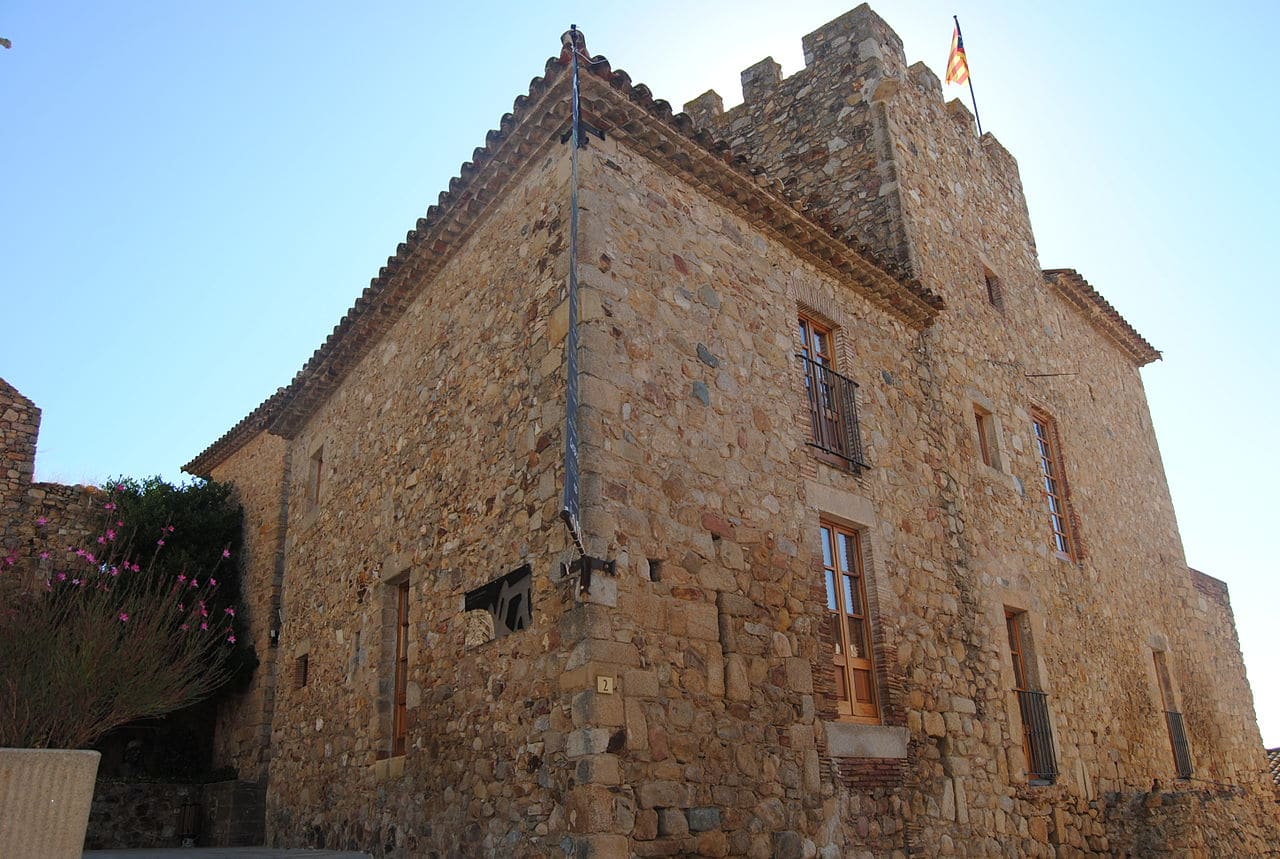
Benedormiens Castle
Although it receives another name, it is very close to the previous population. In fact, you can get there on foot. You have to go up the church bid, a pedestrian street surrounded by trees and lampposts from which you have beautiful views of the Costa Brava.
Thus, you will arrive at church of Santa Maria, declared a cultural asset of national interest and located in the square of the same name. It was built in the XNUMXth century and consecrated by the Bishop of Gerona, Berenguer Guifred. Undoubtedly, it is a jewel of Catalan Romanesque.
But more curious will be the Museum of the Doll or the Nina. It was inaugurated in 1997 and has more than eight hundred pieces donated by the collector Josephine Teixidor and donated from different parts of the world. They are dolls of all ages and shapes.
The oldest are from the XNUMXth century, but there are also many from the XNUMXth. Among those shown, the group made in crochet by Isabel Muntada and other collectibles donated by such well-known brands as Barbie or D'Anton.
On the other hand, next to the museum, you can see the benedormiens castle, also declared of national cultural interest. It has been restored several times, but its oldest part dates from the 1041th century. However, the first document in which it appears is from the year XNUMX.
Do not expect to find the typical medieval castle. It has different shapes, but the facade in the form of a semicircular voussoired portico with five loopholes stands out in its construction. Another of its facades has a window and a balcony that is also lintelled and ends in a gallery under which there is a row of loopholes. But perhaps the most impressive part of the building is its south façade, with four large vaults that support a long balcony area.
What to see in S'Agaró
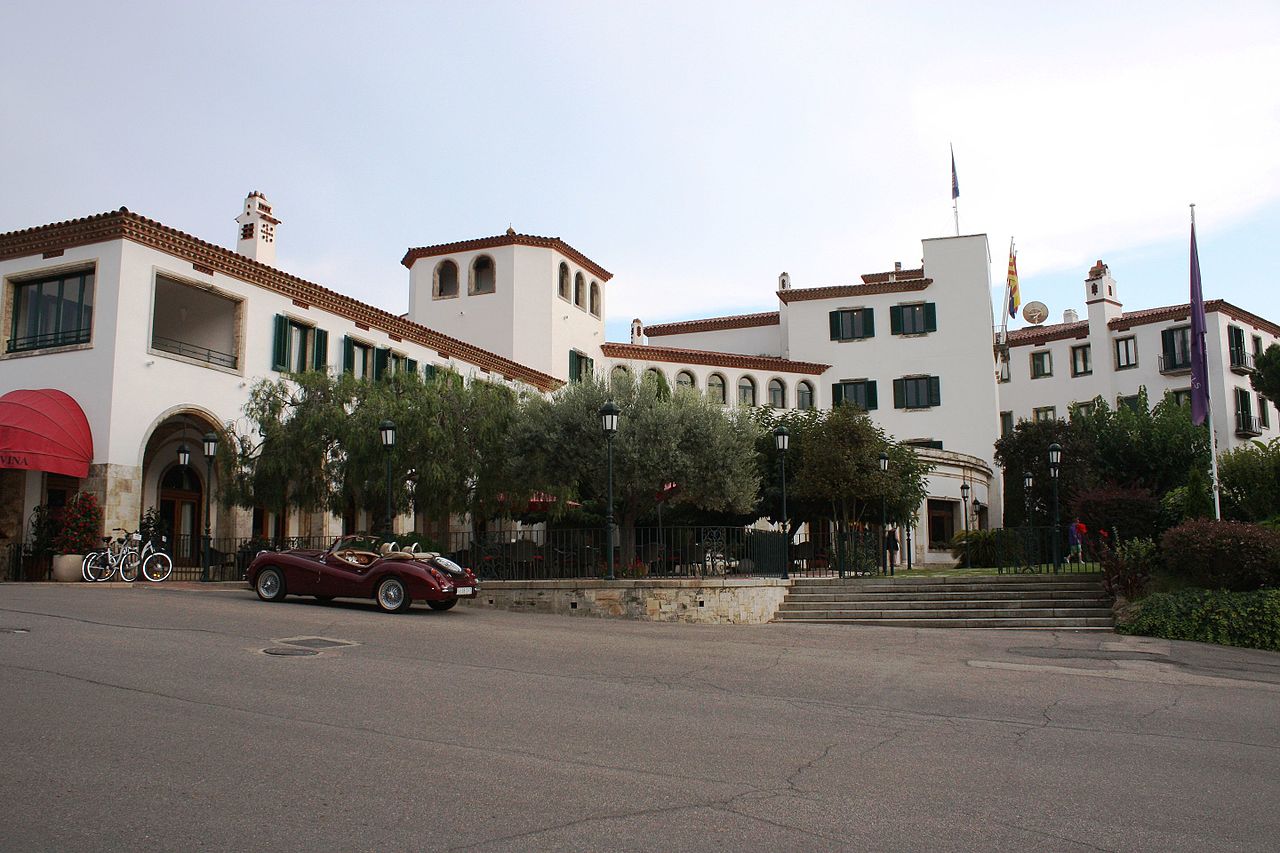
Hostal de la Gavina, in S'Agaró
Despite everything we have shown you, surely the most spectacular town in the entire municipality is S'Agaró. Because it is a precious urbanization built at the beginning of the XNUMXth century for the privileged classes of the area.
It was the work of the architect Rafael Maso and respond to the style noucentista. However, over the years other more modern buildings were added. In any case, the central nucleus of the urbanization is made up of beautiful chalets with large garden areas. In many of them you can see the influence of traditional Catalan farmhouses and the complex also has services such as a school, tennis courts and a restaurant.
Among the chalets that make up the urbanization of S'Agaró, we will mention that of Rafael Masó himself, the Roquet, the Badía or the Bufalá. But we want to highlight two so that you pay more attention to them if you visit the town.
One is known as the Senya White, which was the first to be built in 1924. Perhaps for this reason, it has a privileged location, next to the Camino de Ronda that we have already told you about. We do not need to tell you that, from it, there are spectacular views of the Costa Brava. It is a single-family house with three floors with a porch and terraces.
On the other hand, the second is Hostel of the Gavina, which originally was also a single-family house located in the Plaza del Roserar. It was built between 1924 and 1929 by Masó himself, although its current appearance is due to Francesc Foguera. As well as being one of the most outstanding constructions in S'Agaró, it is one of the most original. In the part that faces the square, it responds to the Italianate and classicist trend of Noucentisme, while the garden area has a more rural and popular Catalan style.
As a curiosity, we will tell you that throughout its history, movie stars such as Ava Gadner, Elizabeth Taylor or, more recently, Sean Connery y Robert de Niro.
Surroundings of Playa de Aro: What to see
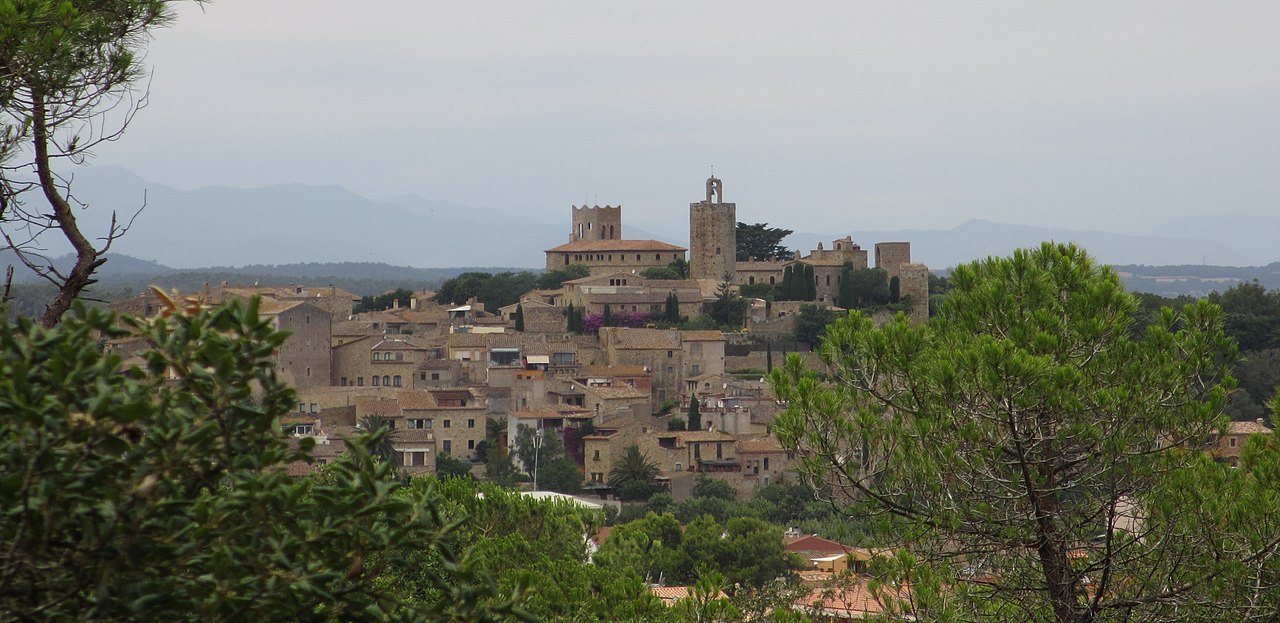
The medieval town of Pals
Although there is much you can see and enjoy in Playa de Aro, your visit to the town of Girona would be incomplete if you do not know the nearby towns who also belong to the Bajo Ampurdán region. Some are beautiful coastal towns, while others are real medieval gems.
Among the latter, we advise you to visit Pals, with an impressive historic center. Highlights in it the Tower of the Hours, a Romanesque wonder built between the XNUMXth and XNUMXth centuries. You can also stroll through the cobbled streets framed by buildings with arches and pointed windows. You should also visit his Church of San Pedro, its medieval wall with four towers dating from the fourth century and the Arqueologic Museum.
We can tell you the same about in peratalla, declared a historical-artistic site and which constitutes one of the most outstanding and best-preserved concentrations of medieval architecture in Catalonia. You can see the remains of his castle from the XNUMXth century with its homage tower, the Church of San Esteve, of the XIII, and the Peratallada Palace, from the XIV. But a simple walk through its streets will transport you to the world of the Middle Ages.
As for the coastal towns near Playa de Aro, we advise you to visit Begur, with its houses of Indians returned from America, its Romanesque core of Esclanya and its beautiful sandbanks. or the spectacular Tosa de Mar, with its impressive castle which is a national monument and which includes a well-preserved medieval population.
In conclusion, to the question «Playa d'Aro: what to see?», we have responded by showing you some of the natural wonders of this municipality in the province of Gerona, in the heart of the Costa Brava. But we have also told you about the peculiar S'Agaró and the monuments of Castillo de Aro. We have even advised you to visit some of the nearby towns, which offer you both medieval jewels and beautiful beaches. Don't you feel like traveling to the Catalan town?